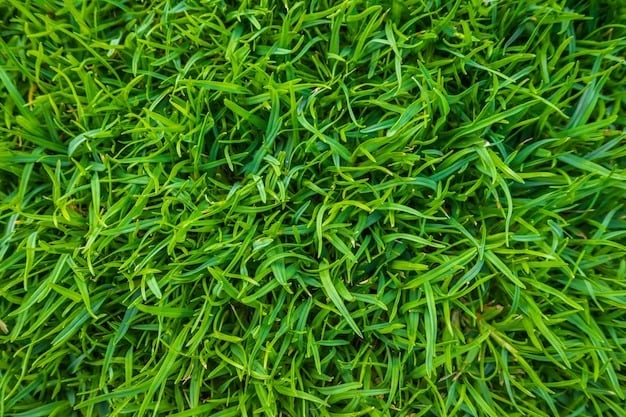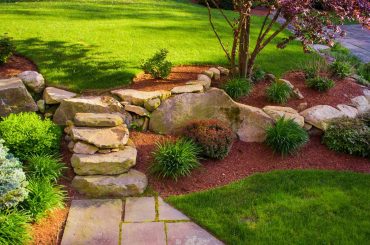Table of Contents
Are you tired of battling the never-ending invasion of common weeds in your garden? Fear not, as we‘re about to dive into the world of common garden weeds. Don’t let their pesky reputation fool you; these weeds have unique qualities and fascinating benefits as well that you might have never heard of. From the tenacious crabgrass to beautiful dandelion, we’ll explore 34 common types of garden weeds and give you valuable tips on how to identify and manage them.
Not only will you learn how to remove these weeds effectively, but you’ll also gain a deeper understanding and appreciation for the diversity of plant life around us. Also, learn how to make homemade weed killer for a cost-effective and long-lasting solution.
So get ready to explore the fascinating world of common garden weeds with us.
1. Dandelion
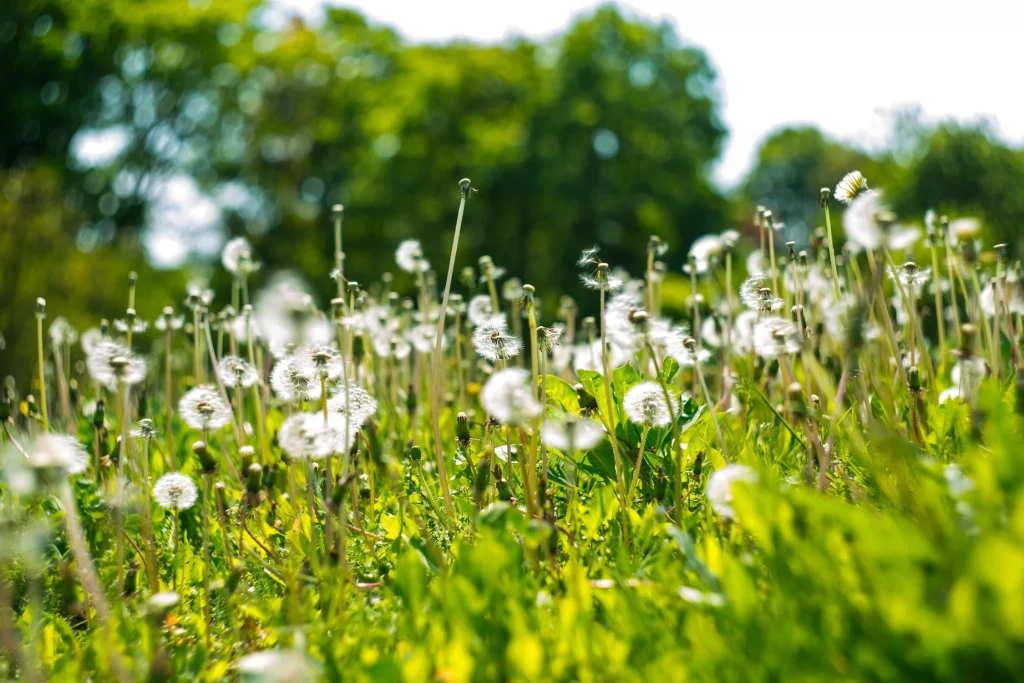
Dandelions may look pretty, but they can be a real nuisance in your garden and are one of the most common weeds around the globe. Did you know that one Dandelion plant can produce up to 15000 seeds? That’s why it becomes necessary to eliminate them before they take over your garden.
How can you control it: You can pull them by hand or use a dandelion digger tool or apply a herbicide specifically designed for dandelions. Make sure that you take action on time before the seeds spread and ruin your beautiful garden.
2. Crabgrass
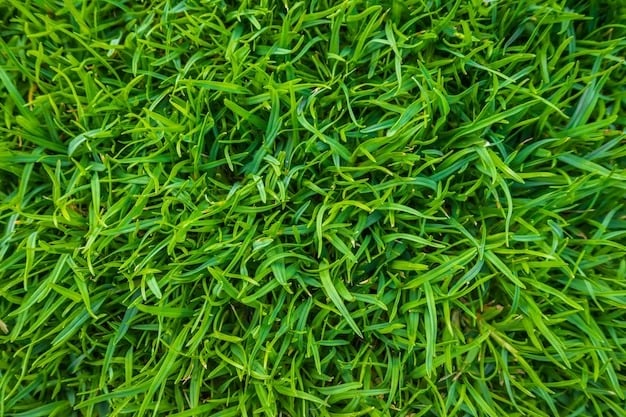
Crabgrass is one of the most irritating and common weeds in your garden. This spreads quickly on the plant and creates unsightly patches. Luckily we have found a way for you to get rid of these frustrating weeds.
How can you control it: You can use a pre-emergent herbicide in the spring season to prevent it from germination or apply a post-emergent herbicide to kill the existing plants. Don’t let crabgrass take over; enjoy your beautiful lawn weed free.
3. Clover
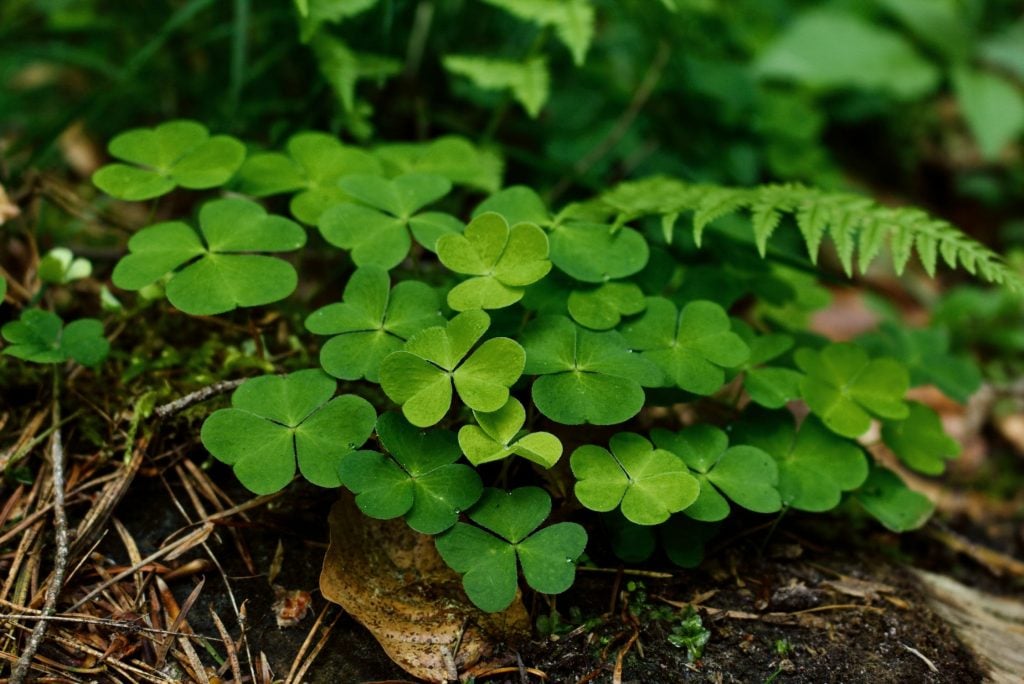
Clover may look charming in a meadow, but sadly it’s not welcomed by gardeners that much. These types of common weeds are specialized in growing rapidly and taking over all your plants. But there’s a hidden fact that most people aren’t aware of, clover can actually help fertilize your soil.
How can you control it: There are many ways to do this; you can pull it by hand directly, use a hoe or even apply herbicide, whatever suits you best.
4. Common Chickweed
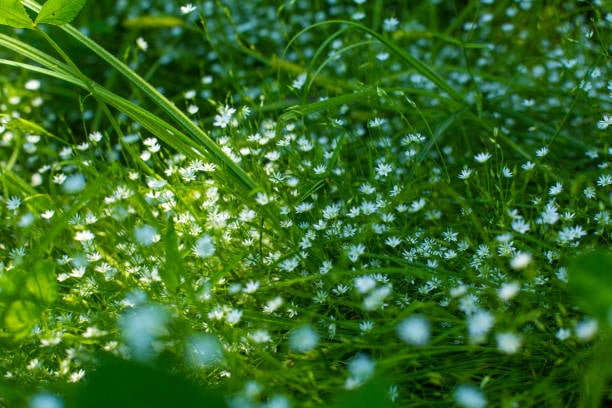
Common chickweed can be a pesky plant as it is fast-growing and can quickly spread, creating a tangled mess. But did you know that chickweed is actually edible? It’s a great source of vitamins and minerals and is used in smoothies and salads.
How can you control it: If you still wanna remove it, then you can do it simply by hand. Make sure to take it out from the roots. Or you can even let them harvest and enjoy their nutritional benefits.
5. Purslane
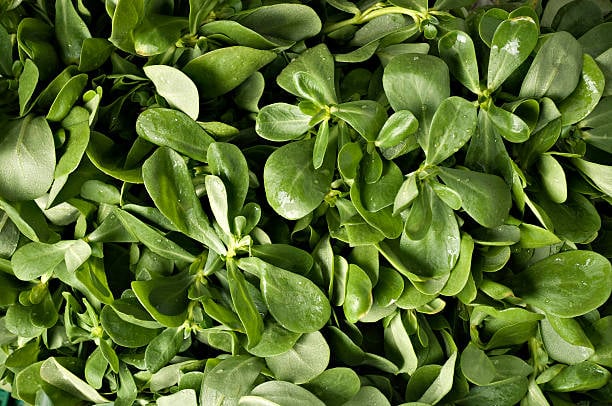
Purslane may look like one of the harmless common weeds, but it’s actually an aggressive weed that can take over your garden in an instant. However, this weed is also packed with nutrients, Including Omega-3, Fatty acids, and vitamins A and C.
How can you control it: To remove it, you can simply pull it by hand, use a hoe, or even let it grow and enjoy the benefits by adding it to your next salad.
6. Broadleaf Plantain
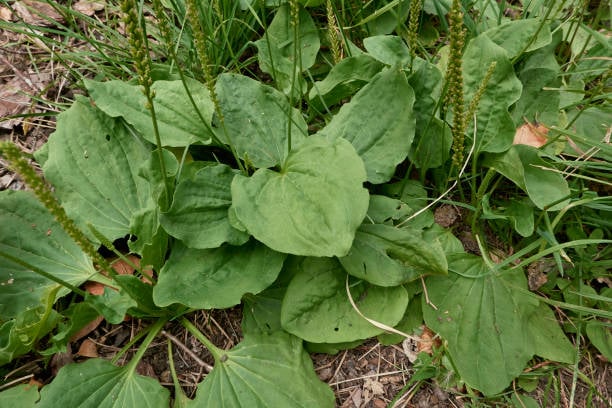
Broadly plantain is a common weed in lawns and gardens that can be difficult to control. But did you know that this plant has medicinal properties too? It can be used to treat insect bites, burns, and even digestive issues.
How can you control it: If you want to remove it, we suggest that you use an iron-based herbicide. It can also be removed by hand, but removing the roots is the most crucial part. You can harvest it and use it to make a healing salve.
7. Prostrate Knotweed
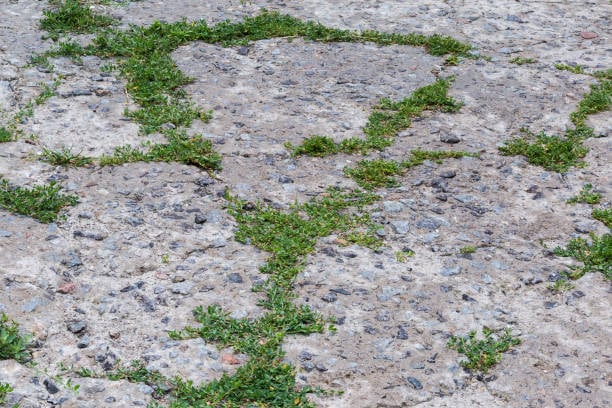
Prostate weed is a low-growing weed that is seen to form a mat-like structure that makes it difficult to control. But most people also believe that it can treat diarrhoea and various skin diseases naturally.
How can you control it: You can try pulling it by hand. It’s hard but not impossible, or you can use iron-based herbicides; these weeds need something strong to get out of your way. The best time to apply is in early winter when they are just about to start germinating
8. Ground Ivy
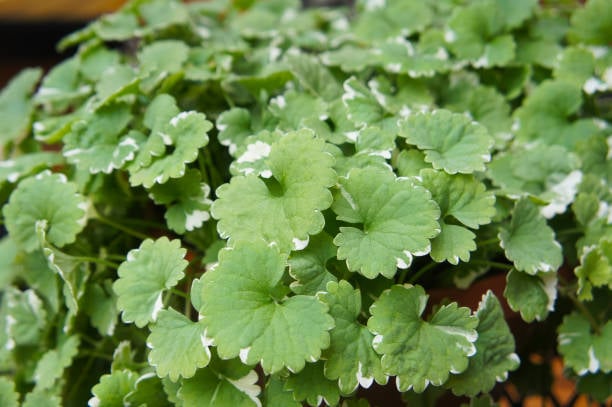
It is a perennial plant, also known as creeping charlie, that tends to produce stems that root at the nodes, which makes it very difficult to remove if they have started growing. Removing it will not be an easy process; you will have to do it continuously a few times to get rid of it completely. However, it has brilliant capabilities to cure wounds and respiratory issues.
How can you control it: Try to keep your lawn filled thick as they mostly grow in shady gardens. Iron-based weed killers are the best way to get rid of them.
9. Wild Violet
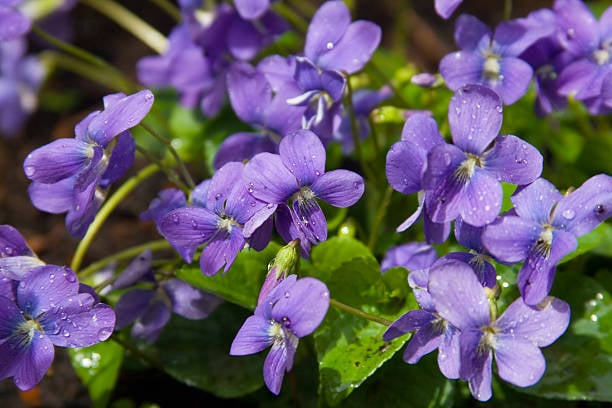
You might see wild violets, mostly in shady areas. They might start overgrowing your lawn, as wild violets grow quite easily. They spread their roots below the ground as they grow through rhizomes.
How can you control it: You will have to dig up the rhizomes along with the plants to remove them fully. Strong chemical treatments are the second most effective way you can opt for.
10. Black Medic
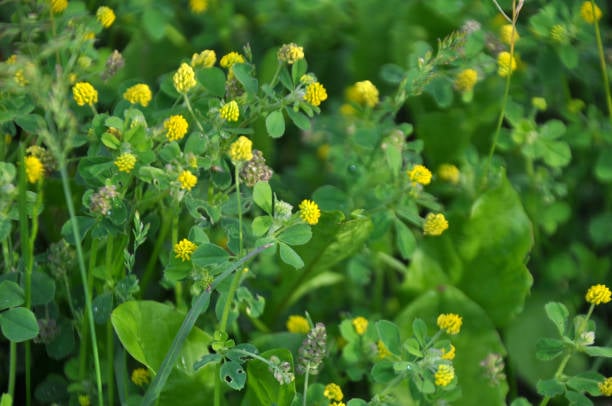
This plant is a short-lived perennial legume that forms mats and prefers soil that is dry and poor in nutritional value and gets along well with direct sunlight. It grows easily through seeds creeping stems, leaves that look like clover, and small yellow flowers.
How can you control it: The best way to stay away from black medic is the proper usage of mulch, just spread it around your garden, and you’re good to go. Also, note that they don’t like growing in well-kept gardens, so you know what to do now.
11. Henbit
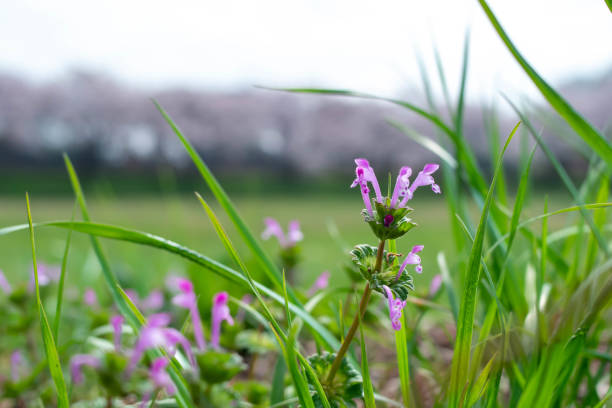
You will mostly see henbit in late fall or winter; that is the time they start growing. They are quite easy to recognize due to their unique purple flowers. However, henbit also has some medicinal benefits that help cure stomach issues.
How can you control it: Creating a dense garden can act as great protection against henbit. Applying iron-based herbicide regularly for three to four weeks will give you the best results.
12. Shepherd’s Purse
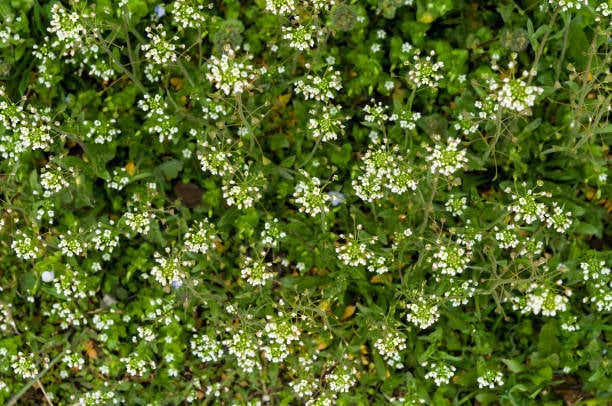
Seen mostly in the winter season, the shepherd’s purse can be seen around mustard plants and grows annually. This plant is known for aggressively reseeding itself once grown at a place. So, keep an eye on that even after removal.
How can you control it: Elimination can be done easily by hand or by using a hoe; please ensure that you remove them from the roots. Then stay prepared to mulch the field for about 2-3 inches to avoid regrowth.
13. Quackgrass
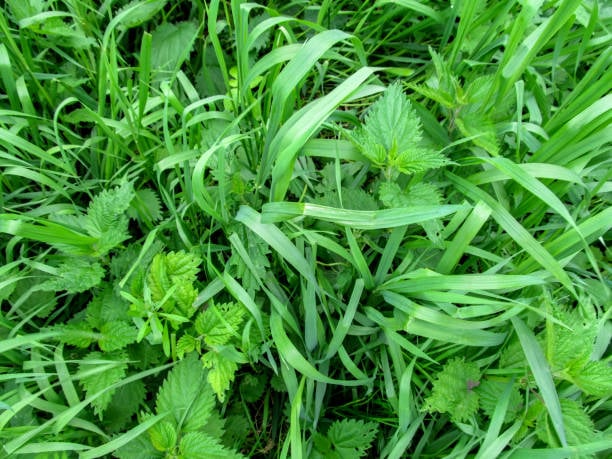
It’s a kind of grass, but bigger and with blue-green edges. They are bound to grow up to 3 feet tall and tend to reproduce with seeds. Quackgrass has very deep roots that make it difficult to remove them.
How can you control it: Maintaining a dense lawn is always a key to staying away from common weeds, and so is true in this case as well. Dig out as deep as possible to remove them as soon as you see them.
14. Annual Fleabane
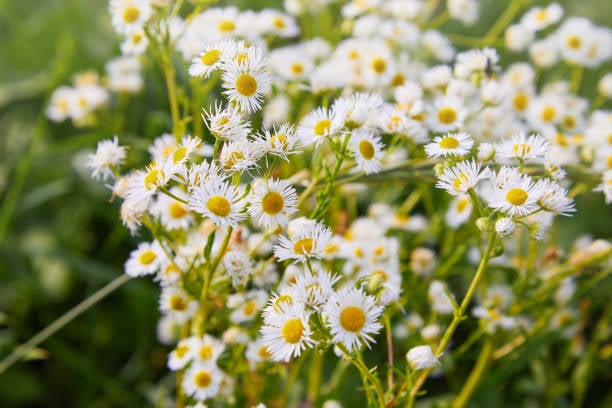
This daisy-like-looking flower shoots up in the season of summer; they even got their name from daisy fleabane. Annual fleabane is really tiny plant, they might look cute and pretty, but they definitely will spoil your plants.
How can you control it: Luckily, they are not that hard to remove a little bit of use of herbicide is good to go.
15. Woodsorrel
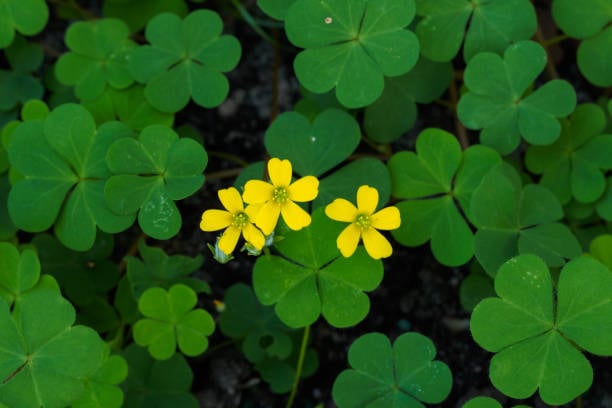
Woodsorrel has leaves that look like clover and produces bright yellow flowers with a maximum of 5 petals. These types of common weeds grow in mid-spring to fall mostly. They have the quality to grow in any kind of soil, so you might find them frequently around your area.
How can you control it: Hand weeding and mulching have by far proven to be the best and most effective way of eliminating woodsorrel.
16. Canada Thistle
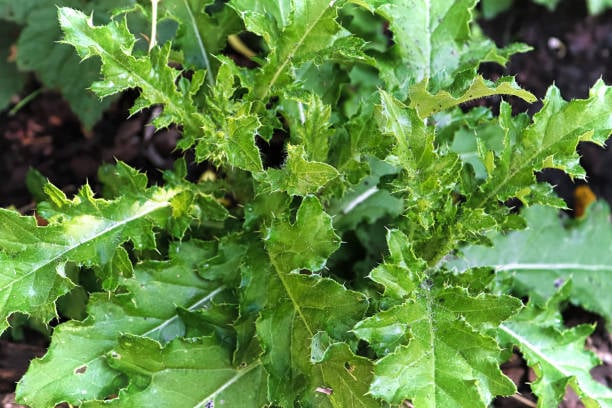
Canada thistle is one of the creeping common weeds. That grows aggressively and has been designated as a noxious weed. They usually grow from mid to late spring and flower around July, august.
How can you control it: Keep in mind they are not at all easy to remove. Even after using the strongest herbicide, you will have to do it for 2 years so it completes elimination regularly.
17. Burdock
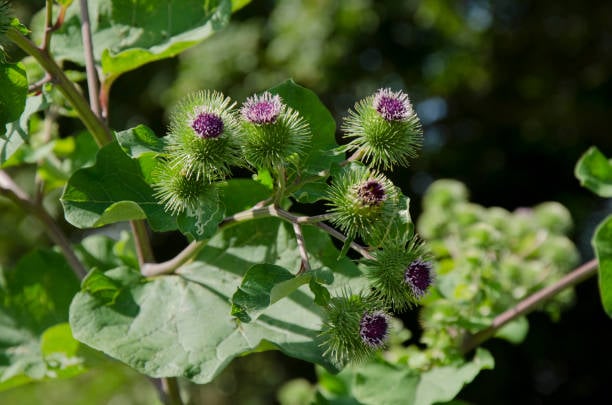
Burdock is one of the prickly weeds that are definitely difficult to control. And many say that you should feel lucky if they have grown in your garden, as they have many medicinal benefits and are also said to be used for cancer treatment.
How can you control it: However, we don’t suggest that you harvest them as they will cause harm to your soil. So to remove, just remove through hand weeding.
18. Chicory
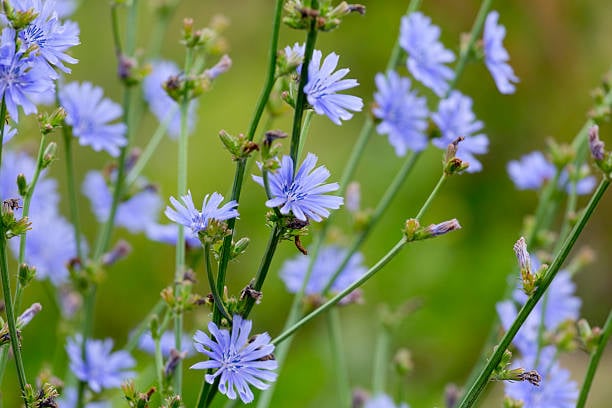
Chicory is beautiful as it has eye-pleasing blue flowers, but it can also cause destruction in your garden. Many people even use it as a coffee substitute. They definitely look gorgeous and even have health benefits, but eliminating them is a smart choice.
How can you control it: They can be easily removed through hand weeding or herbicides. If not, you can also harvest and enjoy their health benefits.
19. Clover
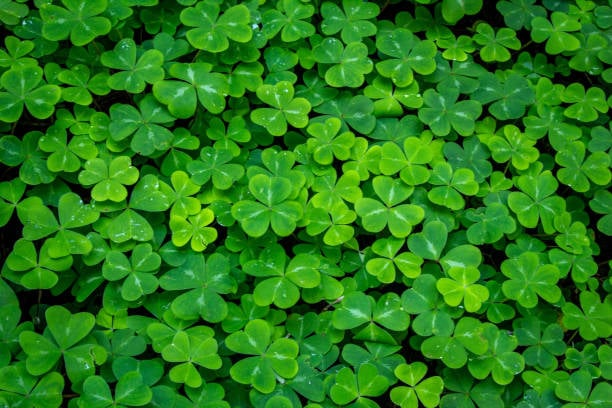
While most people count clover under common weeds but experts say there is nothing wrong with mixing a bit of clover in your garden. Additionally, rabbits adore clover, so if you have some, you may consider maintaining it in your garden.
How can you control it: However, if you still wish to eliminate it, you can simply use iron-based herbicides or remove them by hand.
20. Fireweed
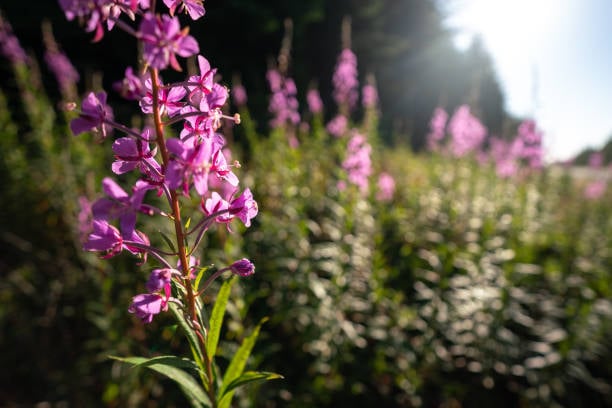
Fireweed is one of the common weeds that grow mostly in disturbed soils after a fire or logging activity. They will instantly take over your lawn in a blink of an eye. So it gets important to remove them immediately.
How can you control it: Hand pulling and mowing can be a great way to get rid of them. Make sure to do this before they get to the seeding stage to stop them from spreading.
21. Garlic Mustard
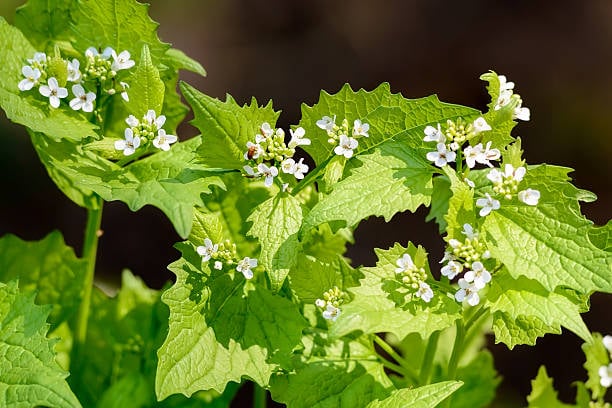
Garlic mustard is an invasive weed that can quickly take over even in dense areas and outcompete native plant species. They can easily be recognized through their garlic smell.
How can you control it: It can be removed by hand, but make sure you get to the roots and remove it precisely, as they can grow back very fast.
22. Gorse
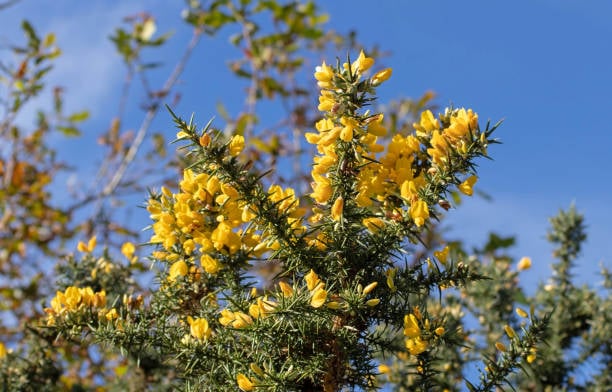
Gorse is a thorny shrub that usually grows up to 10 feet tall. It mostly grows in Europe but now has started growing in most parts of the world. Surprisingly the US has seen a huge growth in Gorse in the past few years.
How can you control it: Removing it by hand and cutting out the roots can be effective, but you might have to use multiple treatments to get rid of them.
23. Horsetail
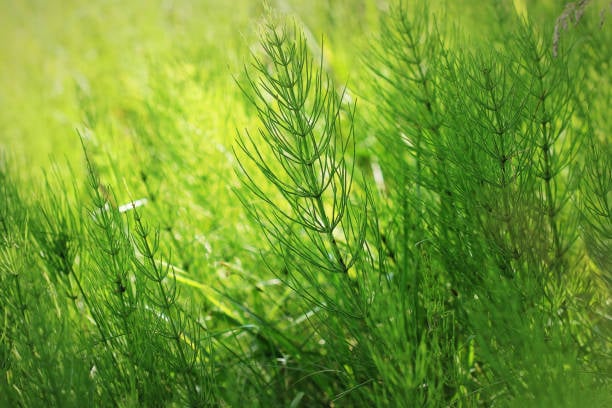
Horsetail is one of the common weeds that has been around for decades. It’s known for its distinctive hollow stems and feathery foliage.
How can you control it: The process remains the same by hand or by using herbicide. But you have to catch it in the early stages to remove it; otherwise, you might never be able to eradicate them fully.
24. Bittersweet
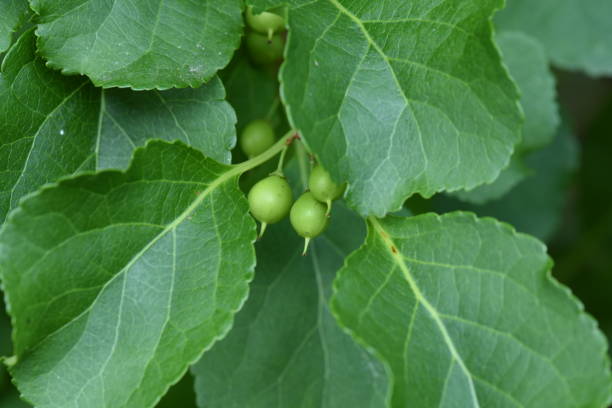
Bittersweet is one of the invasive weeds that thrive in burning heat but can also survive in the shade. This is known as one of the most poisonous common weeds that grows on your trees and harm them.
How can you control it: They can be kept from growing further by continuously cutting and mowing vines near the ground.
25. Wild Madder
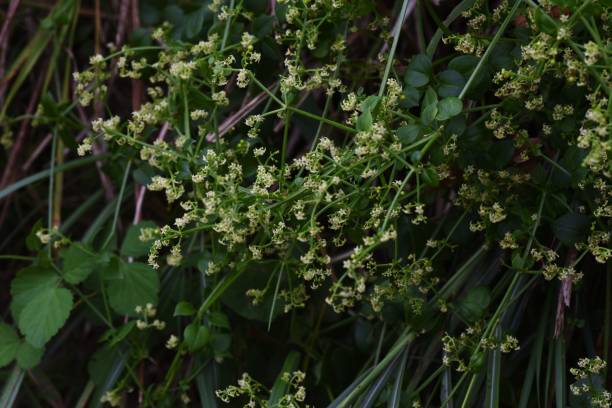
Wild Madder is a perennial weed that can grow up to 3 feet tall. You can recognize it easily through its flower and red roots.
How can you control it: Remove them by hand or herbicide, till and rotate the soil to kill perennial crowns and new seedlings.
26. Stinging Nettle
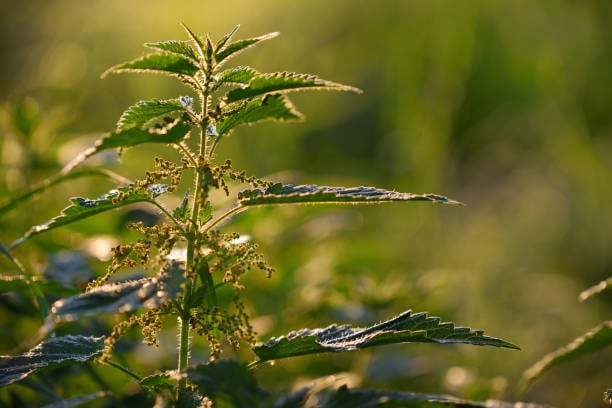
Although they are hardly noticeable when they blossom, their barbs can be painful and hence the name stinging Nettle. You can even consume the young leaves but in a limited amount.
How can you control it: You can remove them by hand, but it is very important that you wear gloves before that.
27. Poison Sumac
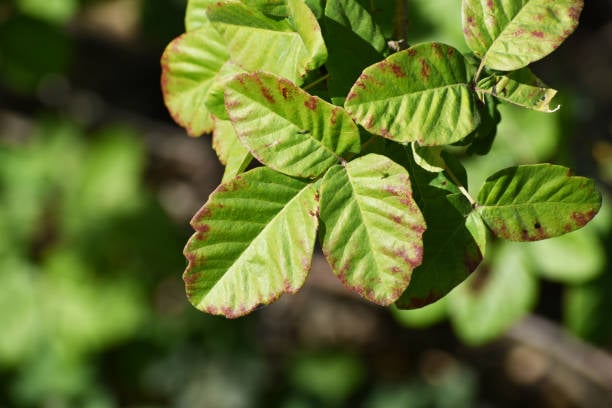
Poison sumac might seem to light a totally normal plant to you, but it has some dangerous oils that can cause severe rashes. They prefer wet soils to grow, so that’s something you might need to keep in mind.
How can you control it: The best way to treat it is by using glyphosate herbicide, as this ensures 100% removal of the plant.
28. Lambsquarters
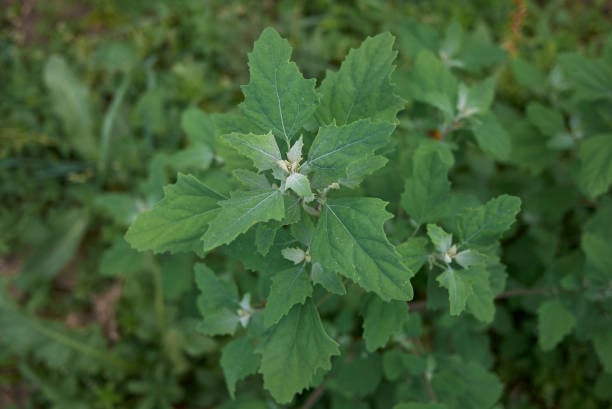
Lambsquaters are broadleaf annual plants with small, light seeds that can last for decades and grow at a rapid speed. If they get their favourite conditions to survive, it becomes really hard to stop and control them.
How can you control it: You will have to pull and remove the plant strongly before it sets seeds.
29. Pokeweed
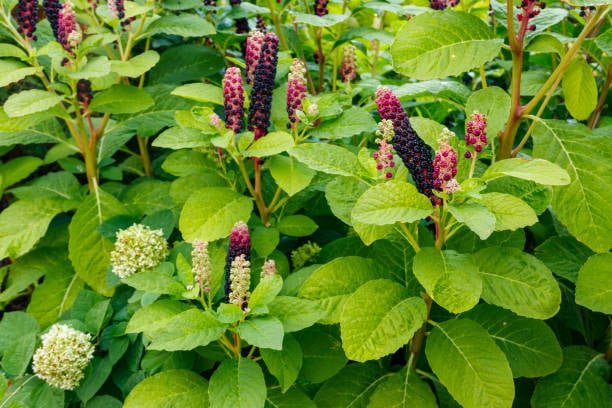
Pokeweek is also one of the common weeds that are also called pokeberry or American nightshade. A single plant can produce up to 7k seeds in one year, and the seeds can remain in the soil for almost 50 years.
How can you control it: Use pre-emergent herbicide; if you see the presence in the soil, hand pull or spot-treat pokeweed and prevent it using mulch.
30. Velvetleaf
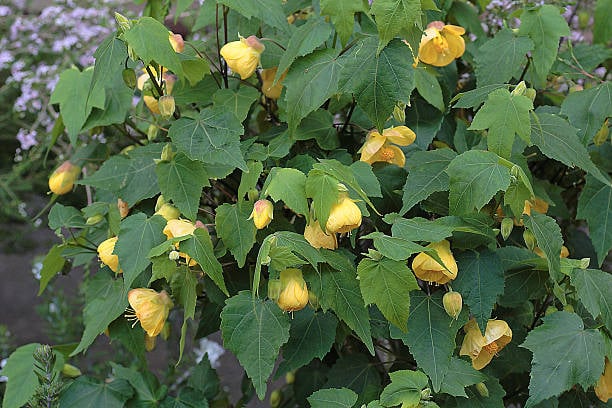
Velvetleaf is an annual weed that grows up to 6 feet tall. It is known for its velvety leaves and yellow flowers. It spears through seeds that can surprisingly persist in soil for 60 years and more.
How can you control it: Hand weeding and herbicides are great ways to remove them. They are home to pesticides and diseases, so it’s important to remove them immediately.
31. Quickweed
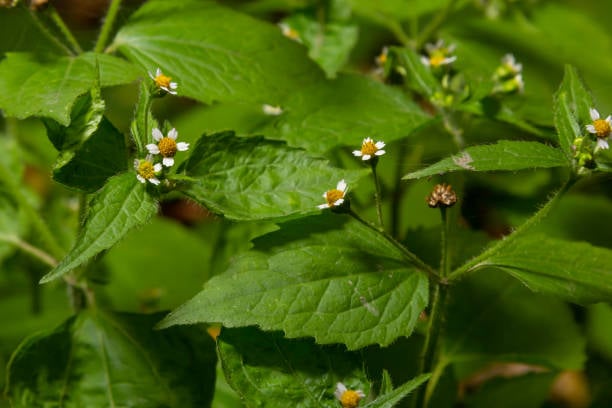
Another addition to the list of common weeds is Quickweed. You can literally find them anywhere. They are small and cute and can grow up to 2 feet tall with flowers somewhat similar to daisies.
How can you control it: As they have shallow roots, they are easy to pull and remove by hand.
32. Common Mallow
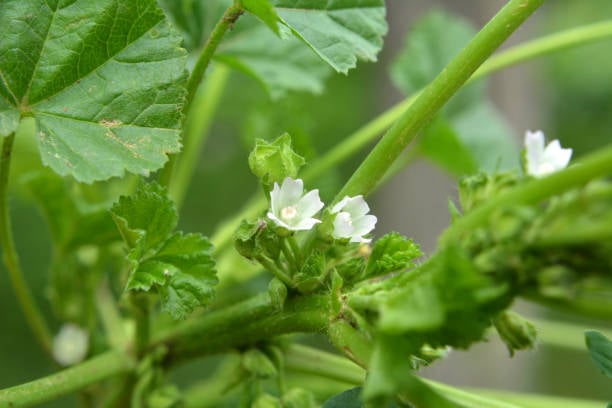
It grows in the season of winter and is also known as cheese mallow. They are designed to survive in any kind of soil and environment, which is why they can grow easily on your lawn.
How can you control it: One thing that they don’t like is thick gardens, so keep your garden thick so they don’t get a chance to grow. Removal can be done through hand weeding.
33. Purple Deadnettle
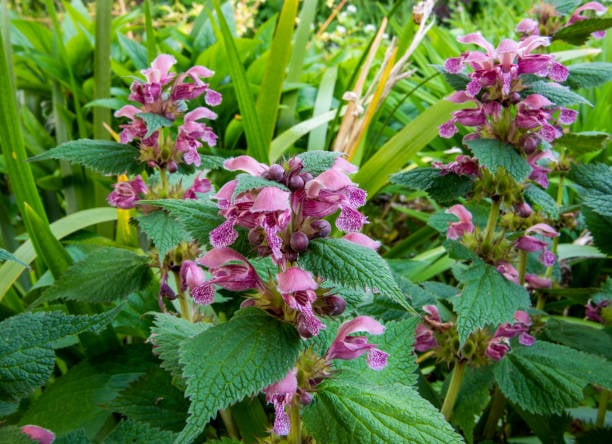
They can easily grow and spread on your lawn. Purple Deadnettle prefers an area full of sunlight and moist soil. The plant is definitely beautiful, having purple and golden flowers, but it is not safe to be around your plants.
How can you control it: Vinegar has proven to be great for removing common weeds, and you can also try this for purple deadnettle. Although do it very carefully by not harming your soil.
34. Dallisgrass
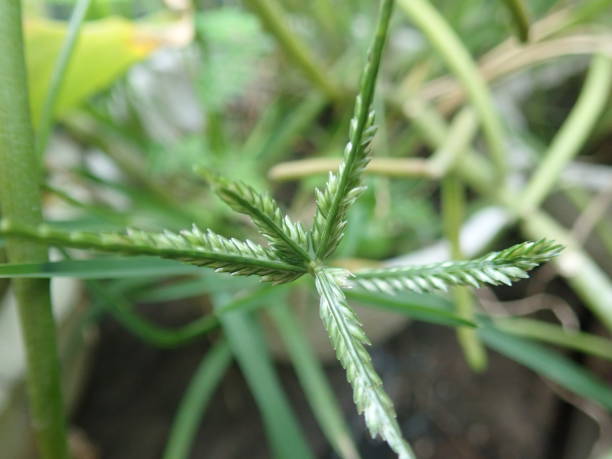
It is a perennial grass weed that is very common in the southern part of the US. It’s known for its tall, clumping growth and tough, coarse leaves.
How can you control them: They can be prevented through herbicides but keep in mind you might have to treat them multiple times to remove them completely.
Conclusion
All in all, common weeds may seem like a pesky problem, but they also provide an opportunity for us to connect with nature and learn more about the plants in our environment; by identifying and understanding the 34 common garden weed types. You can take better care of your gardens and even discover some surprising benefits. After reading the complete guide, you will realize there are some weeds that are even used to cure cancer and many other problems.
So the next time you encounter a common weed in your garden, take a moment to appreciate its unique qualities and learn more about it.
Who knows, you might just discover a new use or appreciation for these often overlooked plants.
Frequently Asked Questions
What Is the Most Common Garden Weed?
The most common garden wee all around the globe is dandelion. Its yellow flowers and fluffy seeds make them easily recognizable. They tend to spread rapidly and are not easy to control; check out the process of removing dandelions from your beautiful garden.
What Kills Weed Naturally?
There are various methods that you can use to kill weeds naturally.
- Pouring boiling water directly on weeds can be a very effective way to remove weeds.
- Mixing vinegar with salt or water can also be a great hack to kill weeds.
- Lastly, hand weeding or using a sow is also a way to remove weeds. However, that is very time-consuming.
What Permanently Kills Weed?
A systematic herbicide containing glyphosate is known for permanently killing weeds by attacking their roots. Let’s see a step-by-step guide to removing weed permanently.
- Start by removing weeds by hand. Make sure you remove the entire root system.
- Then apply herbicide containing glyphosate. Read the instruction manual carefully before applying.
- Maintain your garden and soil to make sure no weeds attack again.

